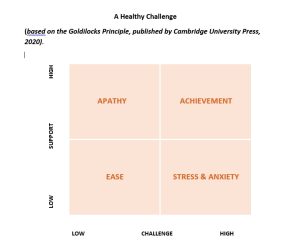Miriam
- 14 Oct, 2023
- 0 Comments
- 2 Mins Read
What is the one tool you need to advance a child’s brain development?

Yes. A dining table and chairs.
Reading another design article over the week that was discussing whether you should put a dining table and chairs into your home and it was talking about design-y stuff like aesthetics and uses and space (small homes and spaces do have a point here) but, I know this isn’t in their brief, having dinner around the table with your children is a key element to a child’s brain development. If you are a regular reader you would’ve heard this before from me, but if not click on this link to read more from the Harvard Graduate School of Education about the why and how to grow your child’s brain.
Resilience & Positivity
You may think positivity and resilience go hand in hand, but sometimes they don’t. Resilience is all about overcoming challenges, positivity is about frame of mind. Sometimes too much positivity can be a bad thing because in life we have trials and challenging times and it is impossible to have a positive mindset, it can also be dangerous.
Thinking we have to remain positive at all times can’t be done, whatever we are feeling we shouldn’t classify as good or bad, it’s just our feelings. Acknowledging how we are feeling and going with it is what is helpful in our everyday lives. Knowing our feelings will change is also helpful. If we feel bad about ourselves for not always having a positive mindset, there’s something wrong with us because we don’t always think happy thoughts all the time, then that’s when positivity can be dangerous. This is something we need to be teaching our children so they can relax just a bit and watch our self-talk too.
Getting children to acknowledge their feelings and working through them rather than fighting against them will help them to develop their understanding about the wide range of emotions we have. Articulating them clearly is also important!
“Resilience is being able to bounce back from stress, challenge, tragedy, trauma or adversity. When children are resilient, they are braver, more curious, more adaptable, and more able to extend their reach into the world. The great news is that resilience is something that can be nurtured in all children.”
Karen Young (Hey Sigmund)
Resilience is not something children either have or don’t have; it’s a skill that they develop as they grow.
Resilient children are more likely to take healthy risks because they don’t fear falling short of expectations. They are curious, brave, and trusting of their instincts. They know their limits and they push themselves to step outside of their comfort zones. This helps them reach for their long-term goals and it helps them solve problems independently.
A healthy risk or challenge is something that won’t hurt them or others. It is something that might not feel within their grasp but with a little help, they will get their. Using the Goldilocks Principle (hot too hard, not too easy, just right) a healthy challenge can look like this –

You can view a You Tube clip for the description of this graph.
If you are looking for help for your child, or a child you know about resilience then stay tuned, a new course is on it’s way. The online course Clear Speech for Children, does have strategies and exercises for your child if you are looking for something right now. There is an October special of 20% discount so don’t miss out!
Miriam.